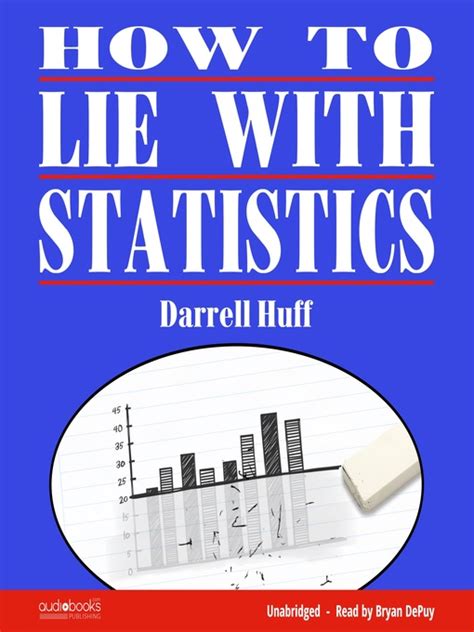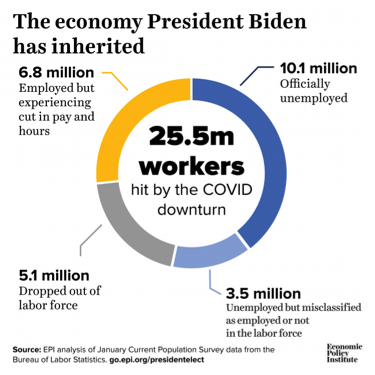According to the monthly jobs report, published by the Labor Department on the first Friday of every month, the U.S. unemployment rate, as of February 5, 2021… is 6.3%. That report shows that 10.1 million Americans are officially unemployed, and all we know for sure about that number is that it’s wrong.

There are many reasons that I’m saying this with such certainty…
1. The same Labor Department publishes a weekly report showing how many people are receiving government assistance as a result of being unemployed, and the latest data shows that 18.3 million Americans were receiving weekly unemployment checks as of January 30, 2021. And it’s been hovering around 20 million for months. That’s a lot different than 10.1 million, isn’t it?
2. The 18.3 million number is the one the government likes to talk about when they want to pass a stimulus bill to pump money into the economy. The 10.1 million number is the one they use when they want to tell us how well we’re doing. Both numbers are basically crap.
3. The Washington Post recently quoted a former chief economist at the Department of Labor, Heidi Shierholz as saying:
“The unemployment numbers leave out so much. Right now, for a host of reasons, the unemployment number is just not capturing all the people that are feeling the coronavirus shock.”
4. How does it work? Well, the 10.1 million number is derived from a telephone survey of 60,000 American households that is conducted every month. They ask whichever adult answers the phone a series of questions, like whether they’re employed full- or part-time and whether they’ve looked for a job in the last 30 days. If they haven’t looked for work in the last month, then they’re not included in the official unemployment number.

5. The problems are many and varied. For one thing, Jonathan Rothbaum and Adam Bee of the U.S. Census Bureau, published a working paper last September that may shed some light on the subject. The two looked at the impact of the pandemic on survey responses and found that one of the things that Covid-19 has changed is who responds to surveys. The paper explains:
“In this paper, we evaluate how response in one survey was affected by COVID-19. In particular we are interested in evaluating how response patterns changed for different groups, including by race, ethnicity, citizenship status, income, and education, and how those changes might bias estimates derived from the survey data.”
The bottom-line is that the pandemic has hit lower income families much harder than white collar, higher income ones. As a result, lower income households today are much less likely to respond to a telephone survey. White collar jobs can often be done from home… blue collar jobs, less so.

6. Last June, The Washington Post reported another factor that is likely playing a role in unemployment numbers being underreported, called a misclassification error. According to WaPo’s Heather Long…
“Another unusual challengeof this pandemic is a lot of people aren’t sure if they are truly unemployed or just on an extended absence from work. The Labor Department has been open about a ‘misclassification error,’ in which some people who should have been marked as ‘temporarily unemployed’ were instead classified as employed but ‘absent’ from work for ‘other reasons.’ This issue makes the unemployment figures look betterthan they are.”
7. Perhaps the biggest issue is the number of people who have stopped looking for work during the pandemic. Estimates are that there are at least five million Americans who lost jobs due to the pandemic, but haven’t looked to replace them for whatever reason. For example, there are probably quite a few women who have not been able to return to work because they need to stay at home with children not in school.
The New York Times looked at this issue in 2020, finding that most government surveys didn’t ask about school closings, making estimates difficult to get, but concluding that well over a million fall into this category. And that was months ago.
8. Unfortunately, the 18.3 million number, which on the surface would seem to be the better measure because it’s based on how many people are receiving unemployment checks each week, also has its share of problems. For one thing, people employed part-time can still be eligible for some unemployment assistance.

The WaPo article also points out that “the data comes from each state, and many states have had severe problems processing unemployment applications.” And that’s certainly been true in these unprecedented times.
WaPo also notes that “the data each state sends to the Labor Department is about how many claims were processed in the prior week. Often times, states have processed four, eight or even 20 weeks of unemployment claims for the same person all at once. So instead of counting that as one person on unemployment, it can look like 20 people on unemployment in that week’s data.”
The nonpartisan GAO (Government Accountability Office), issued a report last November on this topic, saying that the state data is not being reported correctly during the pandemic. According to the GAO report…
“Weekly news releases issued by the Department of Labor have improperly presented state-reported claims volumes as the number of individuals claiming benefits in unemployment insurance programs because the number of claims has not been an accurate approximation of the number of individuals claiming benefits during the pandemic.”
“… because backlogs in processing a historic volume of claims have led to individuals claiming multiple weeks of benefits at a time for previous weeks of unemployment, as well as other data issues, these traditional estimates have not been appropriate in the context of the pandemic.”
9. Great… just great. So, the 10.1 million is too low and the 18.3 million is too high. And no one seems to know or be sure about how many millions of additional Americans have simply stopped looking for work, called the “long-term unemployed,” or how many have seen their incomes fall significantly, although they’re still technically working.

10. So, now various experts are guessing at what the real number is. Federal Reserve Chair Jerome H. Powell’s best guess is that unemployment is around 10% instead of the reported 6.3%. Jason Furman, former chief economist under Obama, thinks the unemployment rate is probably 8.3%. (Want to know how he comes up with his… um, guess? Click here to see his article posted on the Peterson Institute for International Economics on February 5, 2021.)
Not to be left out of the unemployment guessing game is the former head of the Congressional Budget Office (and former adviser to presidential candidate John McCain), Doug Holtz-Eakin also weighed in with his best guess and preferred methodology. He thinks the number is around 10 million based on the number employed before the pandemic as compared with now.
At the other end of the spectrum is Heidi Shierholz, who wrote recently for the Economic Policy Institute, saying she thinks the number still impacted economically by the pandemic is 25.5 million,” broken down as follows…

Shierholz’s number includes those who’ve seen their incomes reduced, but even without that category, she estimates the number to be over 19 million.
Conclusion…
So, obviously we have no idea where we are as a nation when it comes to going to work or struggling under the pandemic’s new realities. What we do know is that the official unemployment rate is NOT 6.3%… not even close.
And yet, that’s the number being reported while essentially all the experts agree that it’s wrong. Does that make it “fake news?” Not really. It’s wrong, but it’s not fake.
Holtz-Eakin, for one, says he doesn’t blame the Labor Department. He believes that the various statistical agencies are simply doing the best they can in an unprecedented time for which no one was prepared. As Holtz-Eakin told WaPo…
“The statistics are as good as you can get. The difficulty is the environment we are in during a pandemic. The problem is not the people doing the surveys.”
Okay, so the unemployment numbers are wrong, there should be no question about that. And that’s all we can know for sure at this moment. What we need to understand is that it’s more likely that the real number is higher than lower, so we’re infinitely better off to over-compensate than under… which is another way of saying that we need economic stimulus now.

If you’re thinking that we don’t, and if part of that reason is that the official unemployment numbers have come down from over 10 percent to 6.3 percent… then you’re basing your view on numbers that are definitely not correct. Remember, stimulus money doesn’t just stimulate those that receive it. It’s money that gets spent in our economy. It fuels businesses, both large and small, and prevents layoffs and other cuts that lead to recessions.
And a recession is about the last thing we need this year or next. The pandemic inspired hole we’re in will take long enough to dig out of without making it worse. Can we all agree on that?
I hope so.
Mandelman out.








